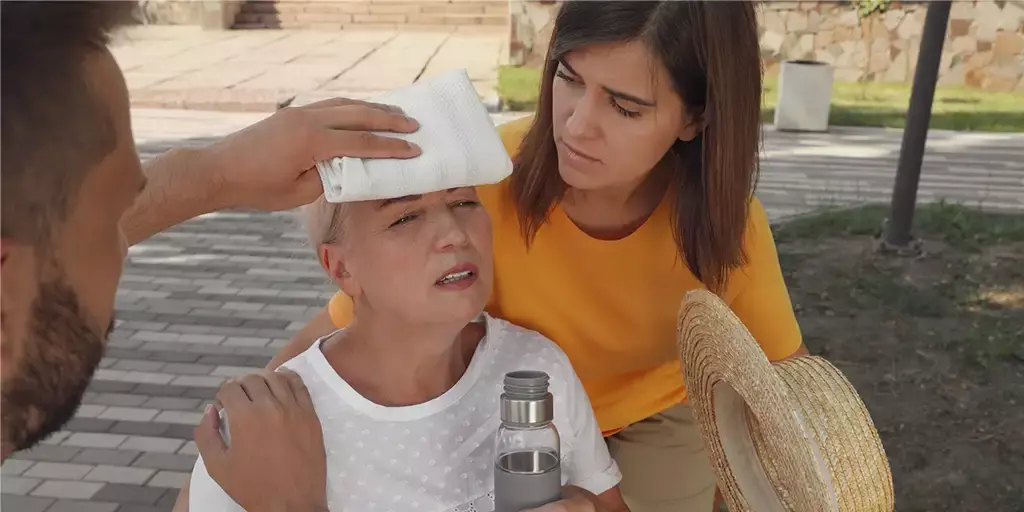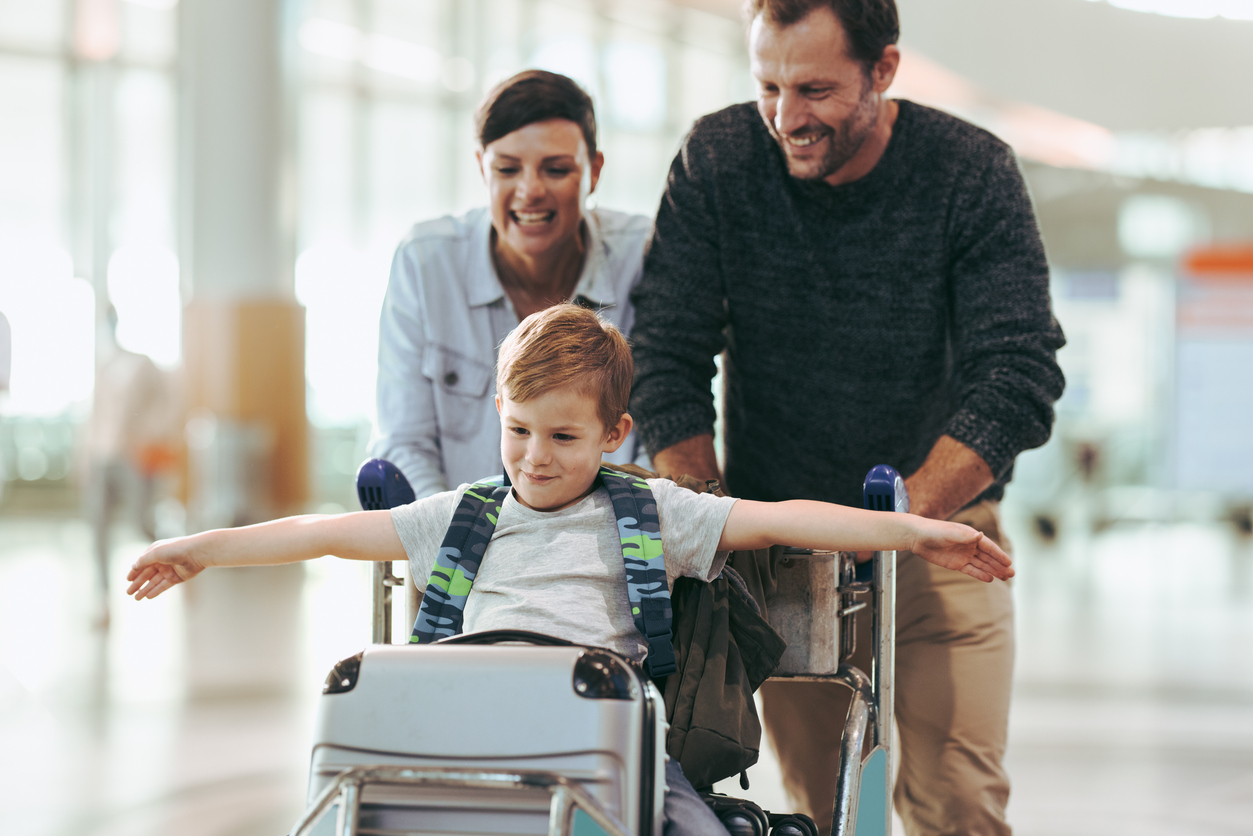Summertime brings people of all ages outside for warm weather activities. But as outdoor activities increase, so does the risk of heat injury. A sustained elevated body temperature can lead to heatstroke, which can be dangerous if not prevented or treated promptly. Learning when to seek help if you or someone else becomes too warm outdoors, and knowing when heatstroke requires immediate medical attention is life-saving information to have on hand as the weather warms up.
What is Heatstroke?
It’s important to note that not everyone who gets overheated while participating in outdoor activities will experience heatstroke. However, there are warning signs that occur before heatstroke, so it’s important to recognize the signs of overheating. If swift action is taken during the earlier stages of heat injury, heatstroke can be prevented.
Heatstroke is a medical emergency that occurs when the human body reaches and sustains a temperature above 104°F. This type of hyperthermia, or increased body temperature, most commonly occurs when someone is exposed to hot temperatures for an extended period of time, or while engaged in strenuous physical activity. Heatstroke is most common in individuals spending an extended period of time or working outdoors during the summer.
If left untreated, heatstroke can quickly cause irreversible damage to your organs, brain, heart, and muscles. The longer heatstroke goes untreated, the more damage it can cause– which increases the risk of serious complications or death. Recognizing the progression of symptoms leading up to heatstroke will help you determine when to seek medical attention.
Symptoms of Heat Injuries
There are different levels of heat injuries:
- Heat cramps
- Heat exhaustion
- Heatstroke
Heat cramps are the mildest of heat injuries, causing painful muscle cramps or spasms due to dehydration. Your body temperature will likely be elevated during this phase, but not dangerously so. Heat cramps can be the first sign of, or progress into, heat exhaustion.
Heat exhaustion can occur suddenly or build over time when the body’s temperature rises sharply, or remains elevated for too long. Symptoms of heat exhaustion include:
- Sweating profusely
- Clammy skin or the feeling of being chilled while in heat
- Feeling faint or fatigued
- Dizziness
- Weak, rapid pulse
- Low blood pressure when standing up
- Muscle cramps
- Diarrhea
- Headache
If you experience these symptoms while engaging in outdoor activities during the hot summer months, immediately move to a cooler environment and stop all physical activities. Drink cool water or electrolyte solutions, and rest until the symptoms have subsided. If these symptoms don’t improve within an hour of resting and hydrating in a cool room, it’s important to seek urgent medical care.
Heatstroke is the final, and most serious form of heat injury. Symptoms of heatstroke include:
- Core body temperature of 104°F or higher
- Altered mental state or confusion
- Nausea and vomiting
- Flushed skin
- Rapid heart and respiratory rate
- Absence of sweat
If you suspect heatstroke in yourself or another person, it’s important to seek emergency medical attention right away by calling 911, or going to the closest emergency department. While waiting for help to arrive, take these immediate actions to help individuals with suspected heatstroke:
- Move to a cooler environment
- Use cool water to lower their body temperature, and place ice packs or cold compresses to their armpits, neck, and groin areas
- Offer electrolytes or water by mouth if they are able to drink
High-Risk Groups
In addition to the symptoms listed above, individuals with certain underlying health conditions or those who are exposed to high temperatures for an extended period of time should seek medical help even with mild symptoms. Conditions such as heart disease or diabetes can increase the risk of complications from heat exhaustion or heatstroke. Other groups that are at a higher risk of heatstroke include those who are:
- Children
- Elderly
- Pregnant
- First responders
- Athletes
- Taking medications like vasoconstrictors, diuretics, or beta blockers
How to Prevent Heatstroke
The fear of heatstroke shouldn’t keep you indoors all summer, but proactive measures should be taken to keep you and your loved ones safe during the hottest months of the year.
- Keep an eye on the outdoor temperature and humidity level
Being aware of the temperature outside, the humidity and the heat index (how hot it feels) can help you make informed decisions regarding your time outside and the activities you participate in. Heatstroke can occur more rapidly in hot, humid temperatures, as humidity makes it more difficult for our bodies to dissipate heat through sweating and evaporative cooling.
- Plan outdoor activities in the morning or evenings to avoid being outside during the hottest part of the day, and use sunscreen or UV protective clothing to prevent sunburning.
- Stay hydrated with water and electrolyte beverages, and avoid caffeine or alcohol while engaging in outdoor activities.
- Keep ice packs or frozen water bottles on hand to aid in lowering your body temperature, and avoid wearing tight-fitting clothing to help support your body’s natural cooling mechanisms.
Seeking Medical Care for Heat Exhaustion or Heatstroke
Heatstroke is life-threatening, but it’s also preventable. Knowing when to seek medical care is essential to avoiding lasting damage from heat injury. Seek medical attention at your closest urgent care when you or a loved one have been outdoors and experience the symptoms of heat cramps or heat exhaustion – especially those that persist after an hour of resting, hydrating, and cooling down. And, if you notice any changes to mental status, sweating patterns, or in heart rate or blood pressure that accompany an elevated body temperature, it’s important to seek immediate, emergency care.



